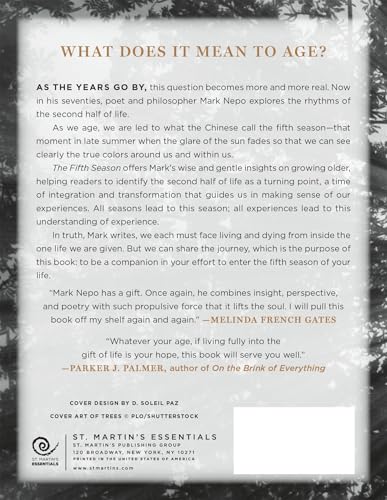If you’ve ever wished your geology class had more earthquakes, magic, and emotional trauma, then hang on to your rock hammer—because this review is all about “The Fifth Season.” Now, I’ve read more fantasy books than I care to admit (and lost sleep to most of them), but this one really shook me up! My friends and I tackled it together, and let me tell you, we went from “Wait, what?” to “Whoa!” about a dozen times a chapter. In this review, I’ll tell you what rocks (pun intended), what kind of shakes things up, and what might send you running for a simpler read. I promise, no geology degree is required—just a taste for epic worlds and unpredictable twists!
In a nutsheel
The Fifth Season by N.K. Jemisin is a wild ride in the world of sci-fi and fantasy. This book kicks off the Broken Earth trilogy, which sounds like what happens when I try to fix a leaky sink—total disaster in the best way.
The story takes place on a crazy, broken continent called the Stillness, where natural disasters show up more often than my neighbor asking to borrow my lawn mower. In the Stillness, society is on the edge and people with magical skills, called orogenes, get the short end of the stick. I mean, they can move mountains (literally), but nobody sends them a thank you card for stopping earthquakes.
Jemisin mixes deep themes like survival, power, family, and what it means to be different. She also tackles discrimination and the struggle to keep going when the world seems out to get you. The writing hits hard but doesn’t get too fancy, and you can tell Jemisin spent some late nights thinking about how to keep readers hooked.
World-Building Wonders and a Magic System Like No Other in The Fifth Season
Let me tell you, the world-building in The Fifth Season by N.K. Jemisin is a real treat for your brain. I’m not talking about the kind of world where you squint and say, “Wait, where did the mountain go?” No, this is a world that feels solid. The Stillness—a place with a name that is almost a joke because the ground is always shaking—cracks with detail. There are maps (real ones, not just napkin scribbles), and every part of the world has a history, a culture, and probably an old grudge or two.
What really stands out here is the magic system. It’s called orogeny, and it’s not your run-of-the-mill wand-waving. Orogenes, who are basically Earth-benders with lots of anxiety, can control seismic energy. That means they can stop earthquakes, start them, or just make rocks dance if they’re bored. But there’s a big catch: everyone is terrified of orogenes. Using their powers can save lives, but it can also get them exiled—or worse. This adds a whole layer of “should I or shouldn’t I?” to every magic moment. Once, playing this out with my friends, we ended up arguing if shaking our living room couch counted as magic or just bad carpentry.
The way Jemisin weaves the rules of orogeny into the plot is smoother than butter on toast. The limits and dangers make every magical scene tense and exciting. You never get that “oh, she can just magic herself out” feeling—there’s always a risk.
And just when you think the world is the real star, along come the characters. Next up, let’s see if they live up to their seismic surroundings or just get lost in the rubble!
Great Characters With Layers Like an Onion in The Fifth Season
Let’s talk about character depth in The Fifth Season. Now, some books give you characters as thin as printer paper. But here? N.K. Jemisin hands you folks with more baggage than me at the airport.
First off, the main players aren’t just walking, talking quest machines. They feel pain, regret, and hope—sometimes in the same paragraph. I won’t spoil things (I still have friends mad at me for that one time), but you meet Essun, a mother who could probably take first prize in the ‘Bad Day Olympics.’ She’s got layers! Every time I thought I had her figured out, she surprised me.
Then there’s Syenite and Damaya, and wow. These three aren’t even just ‘versions’ of a similar person—they’re each shaped by the world in totally different ways. Each chapter let me peek into their heads. Sometimes I loved them. Sometimes I wanted to shake them. That’s a win for character writing in my book.
Jemisin gives us conversations that feel awkward, angry, or loving in ways that remind me of arguing with my grumpy uncle at Thanksgiving. Their decisions have weight, and you actually understand why they make ugly choices. As a reader, I found myself rooting for people even when they messed up.
Not everything is perfect, though. Sometimes I mixed up who was who if I blinked too long or got distracted by my dog, but sticking with it paid off.
Next up, let’s tackle the sticky, important stuff: how everyone in The Fifth Season faces survival and oppression. Grab your snacks for this part!
The Harsh Realities: Survival and Oppression in The Fifth Season
If you like cozy reads with warm hugs, The Fifth Season might not be your cup of tea. This book is like camping in a thunderstorm—electrifying, but you’re probably not making s’mores. One of the biggest themes is survival, and wow, you can actually feel it on every page. People have to scrape and claw through disasters, both natural and, let’s be honest, very unnatural. Nobody’s getting anything easy in this world. If you think you’ve had a tough Monday, try living in a world where the ground literally tries to eat you.
Oppression comes in swinging, too. The main characters are not just fighting against earthquakes, but against people who put them in tiny little boxes and say, “Stay there or else.” Even when they have powers (imagine being able to fix a fault line!), they are controlled and punished. It’s like giving your dog a treat and then telling him not to enjoy it. The society in The Fifth Season runs on fear and control, which makes every little act of kindness or rebellion feel huge. Honestly, you’ll probably want to hit someone with a geology textbook at some point.
The book makes you ask, “How much can a person take?” and “How many times can you rebuild after being knocked down?” Don’t expect it to hold your hand while it answers, but that’s part of the wild ride. Speaking of wild rides, next I’ll talk about the book’s pacing and narrative structure—it’s not your typical stroll around the block!
Pacing and Narrative Structure: A Bumpy Ride in The Fifth Season
Let’s be honest, The Fifth Season does not mess around with traditional storytelling. N.K. Jemisin likes to keep us on our toes. One minute, I thought I had things figured out. The next, BAM! I’m staring at the page trying to understand what just happened. The pacing? Well, it’s not your grandma’s gentle stroll through the park. Some parts zip by faster than me running from a wasp. Others slow you down, like trying to walk through peanut butter.
Jemisin switches points of view often, but she also tosses in some second-person narration. Yes, you read that right. She literally uses “you.” At first, this made me feel like the book was blaming me for everything going wrong in the world (I promise it wasn’t my fault!). But honestly, it keeps you guessing and feels pretty fresh. Sometimes, I had to re-read a page or two, but eventually, it clicked… and then I felt smart, which is rare for me!
Don’t even get me started on the chapter breaks. Some stretch on for ages, other chapters are so short you’ll wonder if you skipped a page. For some, this makes the story feel exciting and unpredictable. For others, it’s like stepping on Lego in the dark: jarring and a little painful.
Do I recommend The Fifth Season? Yeah, for sure! If you like your books weird, bold, and a bit of a rollercoaster, then buckle up and hang on to your bookmark.
Conclusion
Alright, that wraps up my review of The Fifth Season by N.K. Jemisin. From wild magic called orogeny to a world where the ground itself wants you dead, this book keeps you on your toes (and probably your therapist’s couch, let’s be honest). The world-building is top-notch, the characters have more layers than a wedding cake, and the themes hit hard. Sure, the pacing sometimes feels like getting stuck behind a slow walker, but the pay-off is worth it. If you like fantasy that makes you think—and yell at the pages—give this one a shot. Just don’t blame me if you start side-eyeing your local geology. Thanks for reading!



